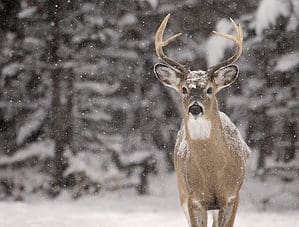Elk and mule deer are two of the larger members of the deer family across North America. While they both have many similarities, identifying one from the other isn’t all that hard. Both are important in the ecological regions they live in, as well as provide an important resource for hunters. Let’s learn about each of these deer species and see what makes them different. Elk vs Mule Deer; what makes them unique?
Comparing an Elk and a Mule Deer
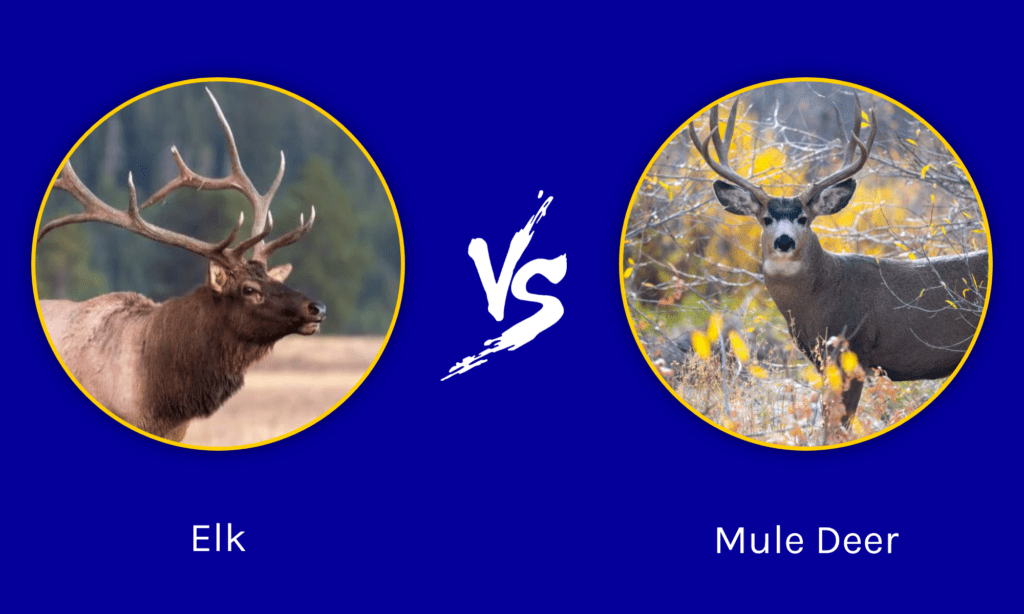
| Elk | Mule Deer | |
|---|---|---|
| Size | Height: 2 feet 6 inches – 5 feet at the shoulder. Weight: 400-1,100 lbs | Height: 31-42 inches at the shoulder. Weight: 121-331 lbs |
| Antlers | Large racks that are shed in late March. Only males have antlers. | Shed antlers from December to April. Only males have antlers. |
| Diet | Primarily grazers, but also forage. Diet includes grass, bark, and sprouts. | Primarily browsers. Extremely variable diets according to the season. |
| Distribution | Eurasia, Siberia, North America. | Mexico through western North America and into Alaska. |
| Social behavior | Extremely social. Groups of up to 400 in the summer. | Groups numbering from 1-7. |
The 5 main differences between an Elk and a Mule Deer
The main differences between an elk and a mule deer are that elk are larger, live in large groups, and live in multiple regions globally. Mule deer are smaller, live in small groups, and only live in Central and North America.
Both elk and mule deer belong to the Cervidae family, classifying them as “true deer”. Elk are some of the largest deer in the world, with only moose being larger. Mule deer aren’t quite as large but are still significantly larger than the average white-tailed deer.
Elk are rather common across many portions of the United States and have recently been reintroduced into the Blue Ridge Mountains in North Carolina. Mule deer are common through the west of North America, including Canada and the northern portion of Mexico.
Although both species can be social, elk are significantly more social than mule deer. Elk are known to group in herds as large as 400 in the plentiful summer months while mule deer rarely have groups larger than seven.
Let’s explore these differences and more, including antlers, diet, and the various subspecies of Elk vs Mule Deer. Check it out below!
Elk vs Mule Deer: Size
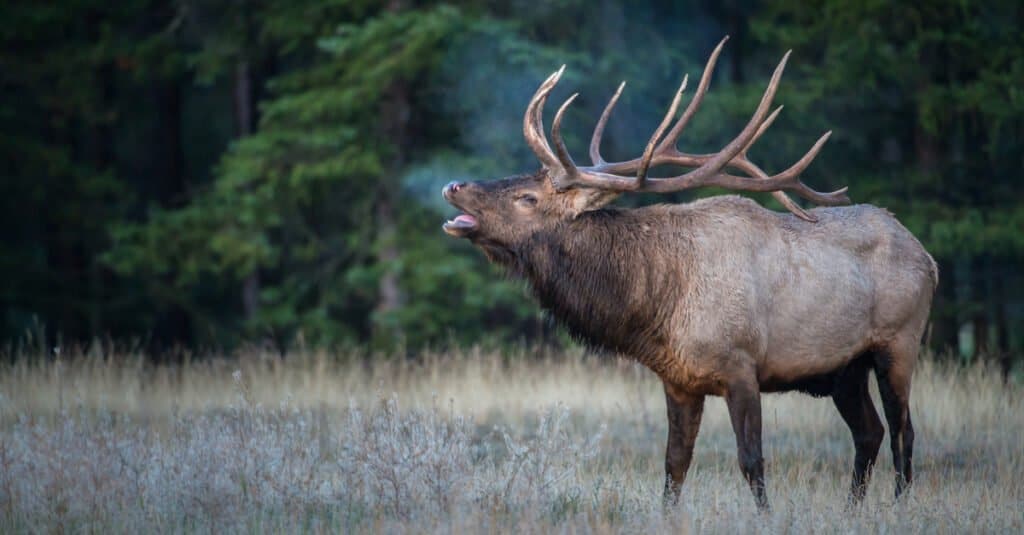
Elk are much larger than mule deer.
©Ghost Bear/Shutterstock.com
Regarding size, elk are significantly larger than mule deer. In fact, elk are the second-largest member of the deer family, only behind moose. On average, elk stand between 2.5 and 5 feet at the shoulder and weigh between 400 and 1,100 lbs. They are extremely tall and have thick bodies when compared to other deer. The largest subspecies is the Roosevelt elk.
Mule deer are much larger than white-tailed deer but aren’t all that close when compared to elk. On average, mule deer stand between 31-42 inches at the shoulder and weigh between 121 and 331 lbs. Male mule deer are usually larger than females.
Elk vs Mule Deer: Antlers
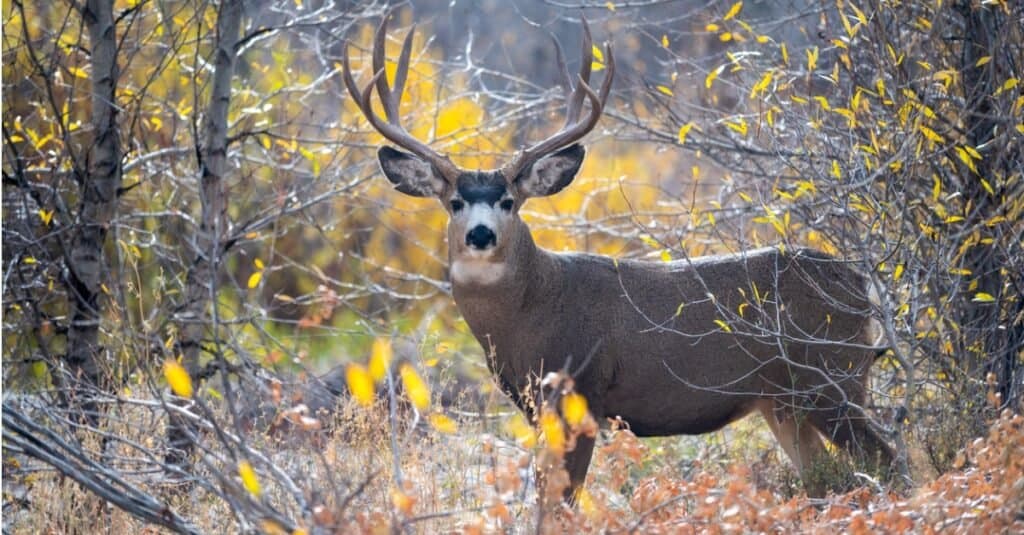
Mule deer and elk shed their antlers at different times and have different growth structures.
©iStock.com/EEI_Tony
Antlers are some of the characteristic features of many deer species. The antlers of an adult elk are extremely large and made of bone. Only the males (bulls) can grow antlers and usually have six tines on each side. In some individuals, the total weight of the antlers can reach 40 lbs. Elk shed their antlers later than any other deer species, sometime around March.
Mule deer also have impressive sets of antlers. Only males can grow them and they often fork instead of branching from main segment. Mule deer shed their antlers between December and April, with most shedding in February.
Elk vs Mule Deer: Diet
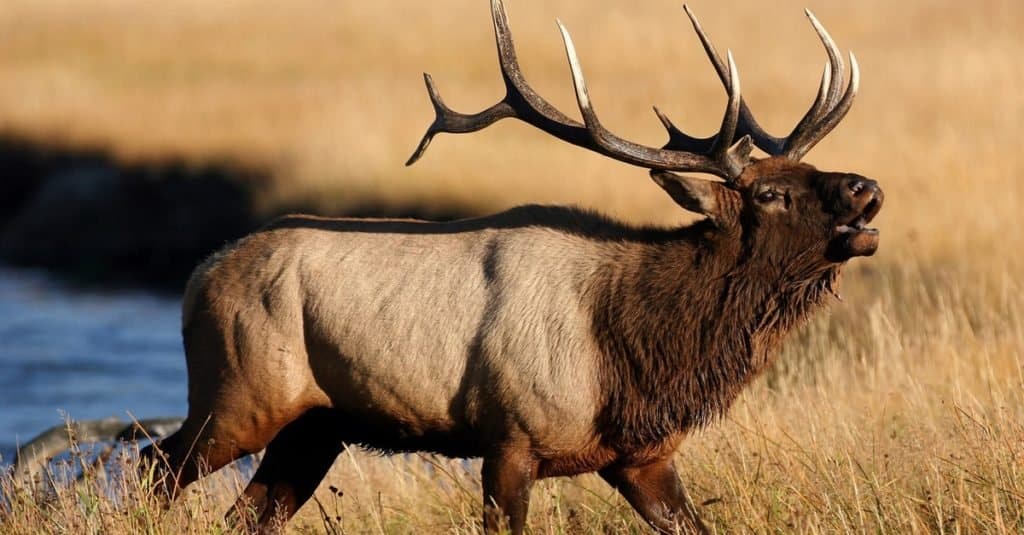
Elk are primarily grazers.
©Wesley Aston/Shutterstock.com
Where most deer are browsers, elk are recognized primarily as grazers, closer to cattle. Still, they are known to browse for food when needed. Elk diets depend on the season, but native grasses, tree bark, and tree sprouts are extremely common food items. An adult elk can eat up to 20 lbs of food each day.
Mule deer are generalist foragers when it comes to their dietary habits. Currently, 788 species of plants have been identified as common food sources that vary through the seasons. Most of their food comes from shrubs, trees, and forbs, but 10-20% of their diet can come from grasses, depending on the seasons.
Elk vs Mule Deer: Distribution
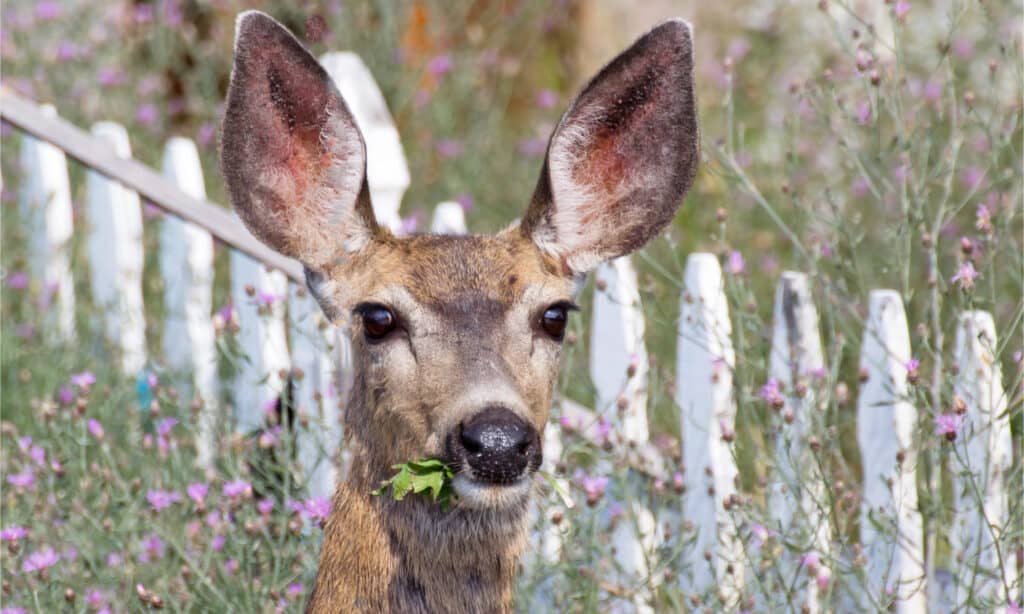
Mule deer only lives in western North America and northern Mexico.
©Ginger Livingston Sanders/Shutterstock.com
Elk are primarily located in two regions, Eurasia and North America. In North America, elk are present through most of the Rocky Mountain Range and the northwestern portion of the country. In Eurasia, elk can be found in Siberia, Northern China, and the Central Asian highlands.
Mule deer can only be found in the western hemisphere. Northern Mexico and Baja, most of the United States to the west of the Mississippi, and the western portion of Canada are all native regions for the various subspecies of mule deer.
Elk vs Mule Deer: Social behavior
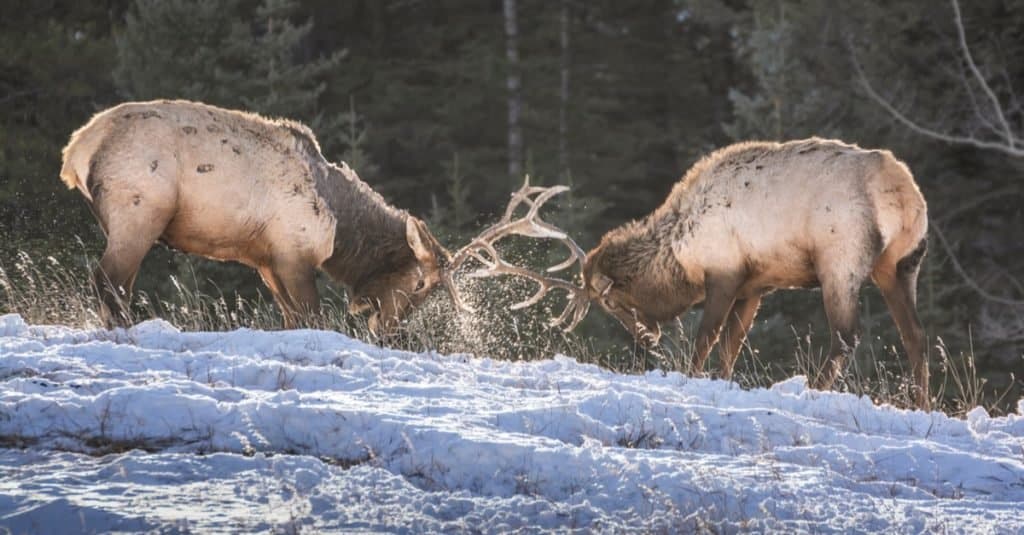
Herds of elk can number in the hundreds.
©James Gabbert/Shutterstock.com
Elk are extremely social deer and often group up in herds that number in the hundreds. The largest groups occur in the summer and can have as many as 400 individuals.
Mule deer are either solitary or live in herds of 2-7 individuals.
The photo featured at the top of this post is © Delbars/Shutterstock.com
Thank you for reading! Have some feedback for us? Contact the AZ Animals editorial team.



